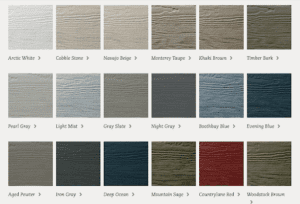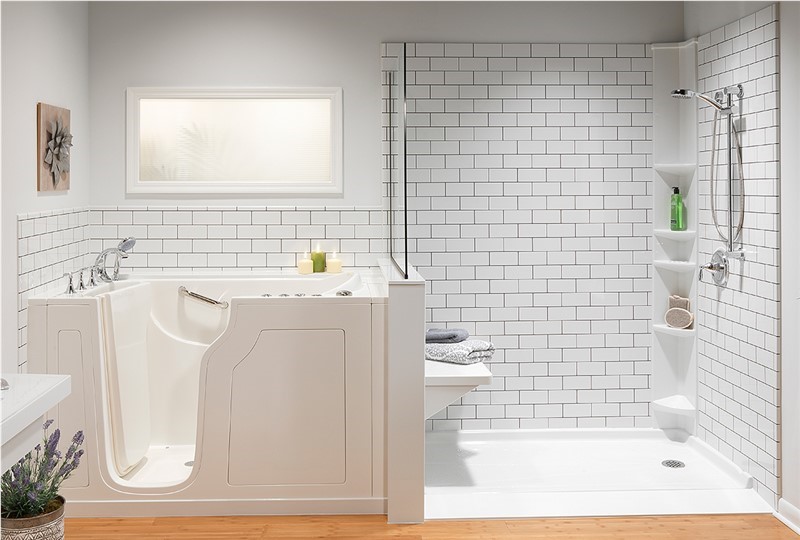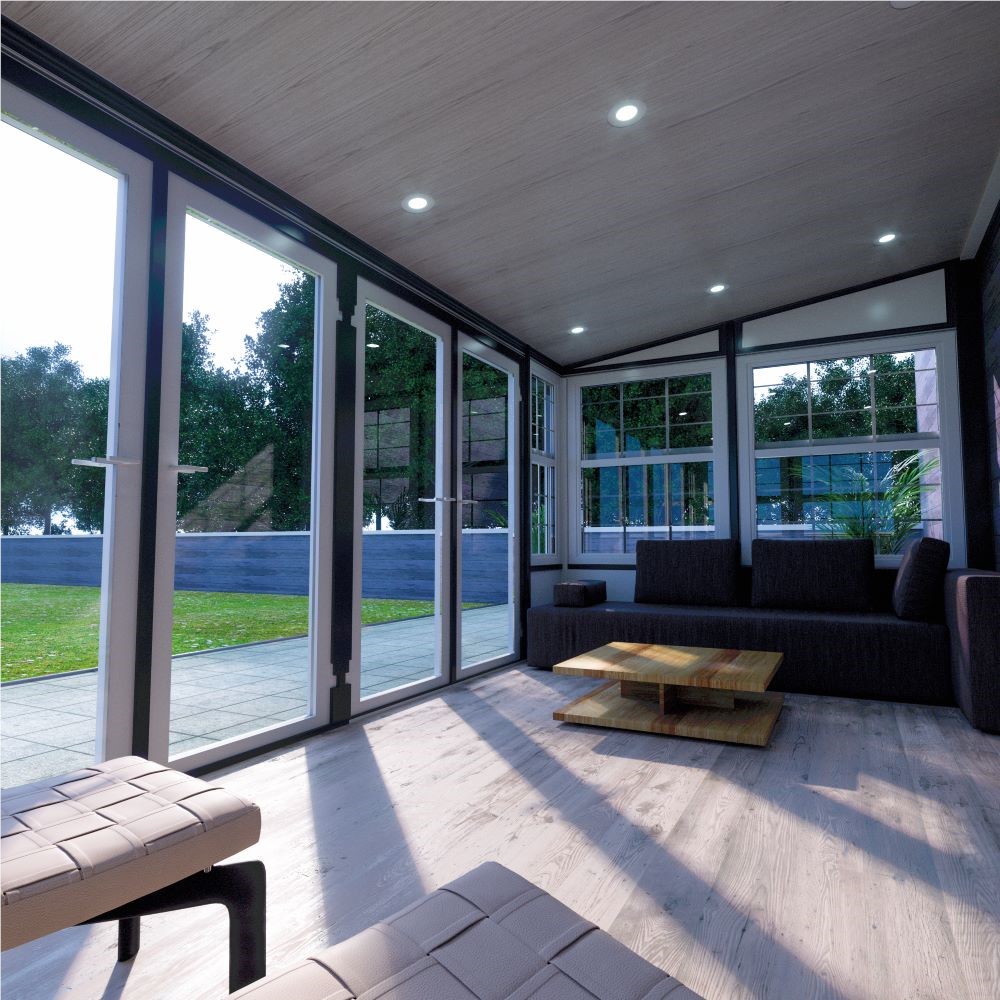Should you repair your wood siding? Or replace it with fiber cement?
If you’re reading this blog post, chances are that you have some rotten wood siding that needs to be replaced and repainted. Now, you may be wondering if you should pay for the repairs, or re-side your house with something more durable and energy-efficient. Regardless of what brought you here, this article is meant to help you understand your options. Let’s look at the pros and cons of repairing and repainting your existing wood siding vs. replacing it with something like fiber cement siding from James Hardie.The true maintenance costs of wood siding
Most homes with wood siding need to be repainted, recaulked, and resealed about every seven years. So, what may look like “small repairs” now certainly won’t be the end of your wood siding maintenance journey. Why? Because wood is a porous material that absorbs moisture over time and must be protected from the elements to prevent problems with mold, rotting, or insects. This means that your wood siding always needs a sturdy layer of paint or stain. But over time, even the best stains and paint will peel, chip, and flake. So, the longer you wait between repainting, the more your wood siding is exposed to the elements. And, the longer wood is exposed, the more damage it sustains. If you plan to keep wood siding on your home, you should budget for a full repainting and resealing project every 5-7 years (and most homeowners with wood siding should also budget for minor repairs in-between). That means if you need repairs now, you can expect to do them again in 7 years and then again in 14. In the Omaha area, depending on the size of your home, costs to repair and repaint your existing wood siding can be as high as $15,000. Let’s say you were able to get your wood siding repaired and painted for half the cost of our high-end estimate above, you’d still need to budget for $25,000+ in painting and repairs over the next 14 years.Damaged wood boards can be a sign of deeper problems
The most complex and expensive siding repair jobs involve replacing damaged boards or shingles. This type of repair is required when mold or rot has damaged an entire area or wall over a long period of time. But the problem may go deeper than the exterior issues you can see. Often, rotten siding on the outside of your home is covering a deeper problem which can be more expensive and complicated to fix. For example, if left alone long enough, rotten siding can allow water to damage structural components of your home like the sill plate, rim joists, or wall studs. If that type of damage is hiding behind your rotten siding, then you may have structural repairs that require skills beyond what the typical house painter can offer.Siding repairs rarely involve “just one wall”
You may be tempted to think, “but it’s just this one wall.” But, as with all major home improvement projects, it’s important to consider resale value. Buyers are less likely to consider investing in a home with only one wall of new siding since the implication is that the other three walls will likely need replacing in the near future. The same goes for repainting and resealing jobs. If only one side of a house has been repainted recently, it will be obvious that that side looks different than the others. Buyers have options, and an uneven paint job could be a deal-breaker.Signs that you should replace your wood siding
Knowing when to replace your siding is as simple as taking a walk around your home. Look for these signs:- Dry rot - Often, dry rot can’t be seen by the naked eye. To find dry rot, walk around your house and tap on your siding with the rubber handle of a tool. Listen for differences in the sound when you tap. Believe it or not, you can have wood siding that looks good on the outside, but has deteriorated underneath.
- Warped siding - Use a screwdriver to poke under any siding that appears warped to see if it’s still solid underneath. If the underlayer feels soft, you have a definite indicator that your siding should be replaced.
- Increased heating and cooling bills - Low-grade wall insulation together with underperforming siding could be the cause of higher energy costs.
- Visible holes in your siding - Even the smallest holes should be a cause for concern. Typically, holes in your siding are the result of insects. What’s worse is that insects are attracted to wet wood. So if you see insect holes, chances are you have underlying water damage.
The benefits of residing your home with James Hardie
James Hardie fiber cement siding board is a durable, long-lasting, and low-maintenance material that’s made up of a few simple ingredients: Portland cement, sand, water, and cellulose fibers. James Hardie siding is:- Fire-resistant - James Hardie siding won’t burn and has been recognized by fire departments nationwide.
- Pest resistant - Woodpeckers, termites, and other pests are not attracted to fiber cement siding.
- Sun & fade resistant - James Hardie ColorPlus Technology is specifically engineered to help resist damaging UV rays so your siding color says vibrant longer.
- Moisture & mold resistant - Fiber cement siding has been uniquely formulated to resist moisture damage, which makes it more resistant to swelling, warping, cracking, and mold.
- Engineered for our Omaha climate - James Hardie siding has been engineered to withstand wet freezing conditions in the winter and hot humid conditions in the summer.
Will Hardie siding increase the value of my home?
Replacing your current siding with James Hardie delivers the best ‘bang for the buck’ of any remodeling project that you can invest in. Dollar for dollar, nothing will raise your home’s value more than properly installed Hardie. According to Remodeling Magazine’s 2020 Cost vs Value Report, fiber cement siding offers a 77.6% return on investment.Fiber Cement Siding Options
Fiber cement siding comes in various options such as boards, planks, panels, and shingles. Fiber cement siding styles mimic the look of wood, stone, brick, and stucco so accurately that the material is often accepted in historic districts. Fiber cement products are also available in soffits, fascia, and trim.Siding Options from James Hardie
- HardiePlank® Lap Siding
- HardieShingle® Siding
- HardiePanel® Vertical Siding
- HardieTrim® Boards
- HardieSoffit® Panels
- Aritsan® by James Hardie
Fiber Cement Siding Colors
 Fiber cement siding is available in a wide variety of 20 factory-primed "statement" color options with 6 trim color options.
Fiber cement siding is available in a wide variety of 20 factory-primed "statement" color options with 6 trim color options. - James Hardie products come with a 15-year warranty to protect against flaking and fading.
- All unfinished products must be painted within 180 days of installation, depending on the manufacturer. Exterior grade 100% acrylic latex paints are recommended.
How do you get started?
Ready to update or replace the siding on your home? Start by contacting a professional to assess your home. Go into that consultation with a general understanding of what your options are and a set of questions you want to discuss with the contractor. Investing in new siding can be one of the best decisions you make for your home. Contact us today for a free consultation to take the first step to beautiful new siding!Subscribe to Thompson's Home Improvement's Blog







Comments